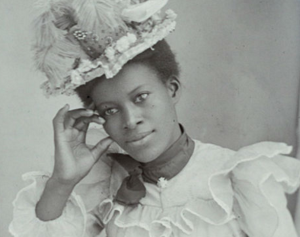
Three young people sit on their bikes, hands resting on the handle bars, staring at the camera with a dissatisfied expression.
If the rest of my pregnancy goes as planned, my son won’t make his grand entrance until the first week of June. Right now, he is negative four weeks old. But even though he’s still flipping around in my belly, people are already constantly making comments about who he will be and how he will act, because he, we assume, is a he.
This, of course doesn’t take into account the possibility that his gender will fall outside of the gender binary or that he could be transgender. But it also doesn’t take into account how dangerous it is for us to assign toxic gender roles, even when the children are cisgender.
“Oh, you’re in for so much trouble. Get ready for noise and dirt and broken furniture. You know, boys will be boys.” And with those four words, we shape and distort masculinity in American culture.
“Boys will be boys.”
We hear is all the time. A teenager kicks a hole in their bedroom wall in a fit of rage, boys will be boys. First graders brawling on the floor of their classroom, boys will be boys. Men catcalling women through open car windows, boys will be boys.
What we really mean when we say “boys will be boys” is that boys are, by nature, disruptive, aggressive, unwise, and predatory. And everyone suffers from this ubiquitous verbal platitude – but the most unfortunate pawns are the boys themselves.
So, this article outlines four of the many negative effects the social order of gendered speech and expectations have on boys and men.
1. It Reinforces a Very Narrow Definition of Masculinity
Take a walk through the baby clothes section of any major retail outlet in the United States, and you’ll be overloaded by the dichotomy of gender.
Pitted against each other in separate corners, pink versus blue: harsh football and dinosaurs and fast cars against soft kittens and flowers and hearts. Boys are strong as bulldozers, as vicious as a t-rex, and as reckless as Ferrari shooting through a red light at 70 miles an hour. We carve our boys into identical toy soldiers and pat ourselves on the back for a job well done.
From birth, boys are told they’re tough. They must be unbothered by pain – stoic, solitary, and self-sufficient. Lone wolves capable of taking down any potential threat without assistance from anyone. They settle arguments with their fists instead of their wits; the only thing separating them the Neanderthal is their upright stature.
We expect boys to act like square pegs crafted to match the unforgiving constructs of square holes and ostracize the trapezoids and rhombuses of this world – the quiet ones, the artsy ones, the ones with their heads in the clouds instead of feet in soccer cleats, those boys who don’t quite fit.
Boy will be boys is a trap – a box that makes boys feel like they have to be of all these things and never anything else.
A study of 14-year-old boys showed a common, daily occurrence of violent exchanges including hitting, slapping, and encouraging others to fight as a means of conflict resolution. When interviewed, most boys admitted they participated in those activities because they felt they were supposed to and that they suffered considerable anxiety about appearing manly enough to their peers.
The obsession with boys acting “like boys” also leads to an increase in risky behavior such as binge-drinking and alcohol abuse in male adolescents. Young men struggle to abstain from alcohol consumption because drinking to the point of intoxication is expected of men in social situations.
Additionally, research shows that men who strongly adhere to the notion of traditional gender roles use alcohol to unlock feelings of power in instances when they feel emasculated, or when they are in physical or emotional pain.
The hyper-particular delineation of what it is to be a man may seem harmless at times, but it defines more than the toys little boys tear from the wrapping paper at Christmas and the after school activities they pursue. It filters into every relationship they forge and even long-term health outcomes.
2. It Hinders Academic Success
For centuries, the academic sphere has been a man’s world, but now that the academic playing field in the US has been opened up to all genders, it’s the boys who are struggling to keep up.
A glance at current college enrollment statistics show that nearly 60% of college students are women, and that women earn more degrees than men do annually; girls also outperform boys at every pre-college level and are more likely to take advanced and AP classes. Boys are also more likely to be high school dropouts than girls.
Unsurprisingly, then, studies show that school-aged children believe girls do better in school, are harder workers, and better at concentrating. These studies unfortunately didn’t take gender non-conforming people into account.
When asked, high school seniors said that boys noted they are expected to do well athletically, to excel in brawn instead of brain, while girls are encouraged to do well academically. The overwhelming glorification of male professional sports stars in American paired with many schools’ willingness to pull sports players out of academic classes for games and meets have merged to create the idea that boys should be better at football than physics.
Many educators, scientists, and researchers agree and worry that the socially rampant definition of masculine is in opposition with doing well scholastically. Studiousness is a trait more often attributed to and encouraged in girls, but there is a good possibility that those traits are cultivated culturally instead of biologically.
Richard Whitmire, author of Why Boys Fail: Saving Our Sons From an Educational System That’s Leaving Them Behind, blames the gender gap on the lack of reaction when a boy does poorly in school: “I see a lax attitude toward males, ‘Don’t worry, Mom, boys will be boys. Your son will catch up,’ as the single biggest problem. In fact, a lot of boys never do catch up.”
By lowering our expectations about what it means to be a boy, we influence these young men to lower their expectations of themselves.
If we expect boys to act disruptively in school or achieve poor marks, they will. These boys trust that they’re incapable of performing as well academically as their female counterparts, so they stop trying to do well.
There is a direct correlation between academic performance and perceived capability. Boys who are told they’re capable of performing at the same or a better caliber than girls score higher than boys who are told they wouldn’t perform as well.
By asking less of them, we hamper their ability to garner knowledge and life skills from their educators, effectively making everything more difficult in the long run.
Instead of expecting less, we should be raising the bar to meet the expectations set for female students. The result will be educated young men who use their intelligence to reach higher and further in school and in life.
3. It Normalizes Aggression
The first week my daughter was in kindergarten, a boy in her class sucker-punched her in the stomach.
Her teacher explained that’s how little boys express their affection for little girls they like – by taunting them, pulling their hair, and pushing them on a playground. Boys, then, are effectively taught that they’ll hurt people, especially their female companions, often physically, as a way to showcase how much they care.
It’s only a matter of time before each finds himself adorned with the tokens of manhood: stars, stripes, and three counts of intimate partner violence.
We instill the belief that boys are, by nature, hostile, mean, and incapable of rational thought during times of stress. They learn they can’t help themselves or control their reactions. There’s no innocent-until-proven-guilty, no benefit-of-the-doubt.
We teach them that they can be rapists and violent criminals, thinly veiled monsters always on the precipice of doing something awful, if the right catalyst were to occur.
We deprive them of agency.
Our culture perceives anger and aggression as inherent parts of men’s existence, which makes us less inclined to offer tools or services to help young men find appropriate ways to channel their emotions, angry in nature or otherwise.
Left without any appropriate guidance or example to follow, boys instigate violence as a means to settle arguments, express a myriad of complicated feelings, and attain resources – which leads to arrest and incarceration at rates far higher than girls of the same age.
On average, young men between the ages of ten and seventeen are four times more likely to be arrested for violent crime offenses than women in the same age range. And the effects of imprisonment are long-standing: Graduation rates drop, and the likelihood of adult incarceration spikes to 41% over their peers who have never spent time behind bars.
We instruct young men to act swiftly, violently, and without thought of the potential consequences and leave them permanent records that can be sealed but never truly erased.
4. It Increases Suicide Risk
By censuring any emotions outside of aggression, multifaceted people are whittled down into one-dimensional characters and forced to stand behind toxic masculinity or be emasculated.
Researchers have spent over twenty years interviewing boys and young men, asking questions and giving them the time they need to answer. From these conversations, they’ve learned that often violent acts – including acts of self-harm – are the result of emotions unrelated to anger, such as fear, anxiety, isolation, and deep sadness. Complex issues are then forced through the one learned and accepted filter: fury.
We brush off serious issues like depression and other mental health issues, not as realized medical issues, but as signs of weakness. Then we balk as they attempt and die by suicide at alarming and heartbreaking rates.
Suicide is the third-leading cause of death in people between the ages of ten and 24 – and 81% of those accounted deaths were boys and young men. Across all age groups, men account for 79% of all successful suicides due to the methods they employ.
While women experience a higher percentage of suicide attempts, men tend to employ more aggressive methods: 51% of males who completed a suicide attempt in the US employed a firearm. Even in death, our boys lean on the learned tendency towards violent means as solutions, which makes rescue and recovery nigh impossible. 85% of firearm suicide attempts are fatal.
Another reason completed suicide is so much more prevalent in men is the undeniable fact they’re less likely to seek help for mental health problems. In fact, men only account for just one-third of all outpatient mental health visits in the US.
Psychologists point to behaviors deeply ensconced in boys from an early age such as the tendency to avoid any situation that requires vulnerability, to the point where they don’t even allow themselves to cry or exhibit sad facial expressions.
Some men are too embarrassed to talk about their emotions, while others have completely lost their ability to even recognize them. They often don’t even know they need help.
Boys and men who can still recognize their mental health issues don’t bring them up at the dinner table or in the locker room because they’re considered signs of a weak constitution and aren’t recognized as a normal part of the male experience.
That same stoicism prevents adolescents from maintaining close friendships during their high schools years and as they enter into adulthood, making it difficult to find a trusted ally in times of stress.
This isn’t out of lack of want or need of those types of relationships, but rather, for fear that simply needing to be close to someone emotionally will make them appear feminine.
Something as basic and primal as human connection has been stolen and repackaged as soft and girly, which is not only a sexist attempt at making women appear less capable, but an idea that leaves boys in a culturally-imposed solitary confinement.
Isolation, paired with the desire to remain in the good graces of masculinity, increases the likelihood that boys and men will try to touch it out or develop self-soothing techniques. Often, their solutions materialize at the bottom of a bottle of liquor or in a plastic baggie from their neighborhood dealer.
Self-medication in the form of substance abuse actually makes people more likely to attempt suicide – six times more likely, in fact. Over 30% of suicides in the US occur under the influence of alcohol or illegal drugs.
Our misguided attempts to make boys stalwart and self-reliant backfires frequently, leaving them fragile and alone in their struggle against circumstance and unbalanced brain chemistry.
***
The implications of a “boys will be boys” world are both obvious and severe.
By leaning so heavily on a blanket statement to explain what the male experience is and should be, we remove autonomy and individuality, stunt interpersonal relationships, and increase the potential for unsafe and belligerent behaviors, while minimizing the likelihood that boys and the men they grow into will seek the help they need.
Our boys deserve more. More respect. More attention. More room to explore who they are as individuals. Fuller, longer lives. Closer friendships. Fewer stereotypes. Less violence. Less loneliness.
And a whole lot more than what “boys will be boys” can give them.
[do_widget id=’text-101′]
Rachel Brandt is a writer, photographer, and mama bear raising her daughter, Harper, and son, Indiana, in the wilds of Southern California with her husband, Guy. Her writing centers around the no BS parenting narratives that everyone lives, but few are brave enough to talk about in public. When she isn’t furiously typing or tweeting, you’ll catch her stress baking, marathoning Buffy the Vampire Slayer on Netflix, or planning her next trip abroad. Find her work on her website and her personal blog, Deleting the Adjectives.
Search our 3000+ articles!
Read our articles about:
Our online racial justice training
Used by hundreds of universities, non-profits, and businesses.
Click to learn more




















